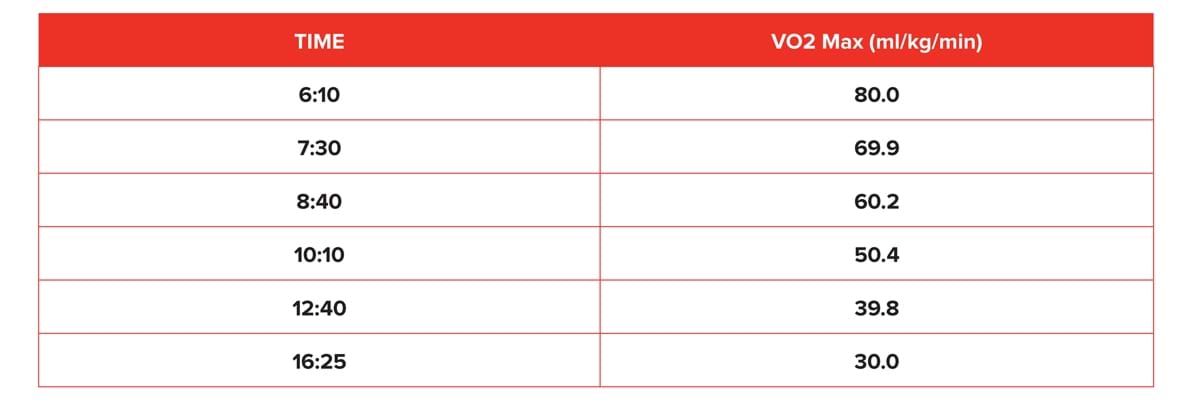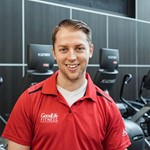One of the most common struggles when consistently working out is keeping track of your progress. Keeping a log of the weights you’re using, the length of your cardio or the number of calories you’re burning are all basic and effective ways to monitor your progress. If you’re lifting heavier, doing cardio for longer, or burning more calories during your workout, you’re making headway.
If you're searching for a bigger challenge, putting yourself to the test every one to two months can help you keep track of how far you’ve come, and how close you are to achieving your goals.
Try one (or all) of these performance tests to evaluate your performance and fitness capabilities, then create a plan for improving your score next time.
Dead hang
You may remember the dead hang from high school gym class. All you need to perform the test is a pull-up bar and a stopwatch. Start the stopwatch, grab the pull-up bar with a pronated (overhand) grip and hang for as long as you can. Try to keep your shoulder blades down and your chest up to ensure the pressure isn’t solely on your arms.
This test is a good measure of your support grip strength, which involves nearly your entire upper body, including your fingers, forearms, back and arm muscles.
Grip strength is important for strength training – when trying to hold onto the bar for one last deadlift rep or one final pull-up – it’s a key indicator of overall body strength and heart health. A strong grip can also help prevent injuries to your wrists and elbows when performing hand-heavy sports like golf, climbing, squash or tennis.
A good baseline goal to aim for is a one-minute hang spread out in 15 to 30 second intervals. Aim to work your way up to a two-minute hold over time.
1.5-mile run
The 1.5-mile (or 2.4 km) run is a popular test for estimating maximal oxygen uptake (VO2 Max), or your body’s ability to consume oxygen and deliver it to your muscles. VO2 Max is also often referred to as your aerobic capacity.
To test your time, you’ll need an activity tracker app, a watch if you’re running on the road or any kind of stopwatch if you’re running on a track. 1.5 miles is almost exactly six laps on a 400-meter track.
Measuring your aerobic capacity is particularly important for runners, but an improved 1.5-mile time will help anyone trying to get more in-shape. VO2 Max is measured in millimetres of oxygen per minute per kilogram of body weight (ml/min/kg).
A typical score is based on your age and gender, but an average score for an adult can be anywhere from 25 to 42, while an excellent score would be anything from 42 to 50 and above. A more detailed breakdown can be found here.
Use the chart below for a rough estimate of your aerobic capacity based on your 1.5-mile time.

Maximum burpees
Another popular test to measure your aerobic capacity is the number of burpees you can complete in five minutes. Not only does this test your oxygen consumption, but it is also a great measure of your functional strength.
The only equipment you’ll need is a stopwatch – set it to a 5-minute countdown and perform as many full burpees as you can. To perform one full burpee, complete the following steps:
- From a standing position, bend into a squat, keeping your hips and knees in-line with your toes
- Place your hands on the ground, then extend your legs back into a full plank position and complete a push-up
- Hop your legs back under your body and return to the squat position, then jump straight in the air with your arms extended above your head. Keep your knees slightly bent as you jump
A good goal to aim for is 30 to 80 burpees for women, and 40 to 85 for men. The upper limit (80 and 85 respectively) is a good target for anyone aged 20 to 29.
300-yard shuttle
The 300-yard shuttle tests anaerobic capacity, involving maximum effort across a short period.
Aerobic exercise requires oxygen as your major energy source, while anaerobic exercise requires your body to break down glucose and other energy stores to produce instant energy.
Anaerobic capacity comes into play during sprint-and-stop sports like hockey, basketball and soccer, or during HIIT workouts.
To perform the 300-yard shuttle test, set up markers of some sort (cones, flags, lines, etc.) 25 yards apart. Start your timer and sprint from one marker to the next, then turn around and sprint back to the first marker. You should be aiming for maximal effort throughout the test; don’t try to pace yourself. Complete 12 total trips or six round-trips to make up the 300-yard distance. A good time to aim for is 70 to 80 seconds.
Bodyweight conditioning
These three short bodyweight tests measure your muscular endurance, or how much stress your muscles can endure against a light load.
- Push-ups in 2 minutes: Test your upper body strength by performing as many push-ups as you can in two minutes. More advanced fitness enthusiasts will push for 20+, while 10 to 19 is a good intermediate goal
- Sit-ups in 2 minutes: Repeat the same test with sit-ups to test your core strength, this time aiming for 20 to 40 reps as an intermediate goal, or 50 to 80 reps for a bigger challenge
- Squats until failure: Perform as many bodyweight squats as you can until you can no longer complete the next rep with proper form. Keep your feet shoulder-width apart and rest your hands on your hips or your opposite shoulders. A good goal for adults is 21 to 26 for women or 27 to 32 for men
